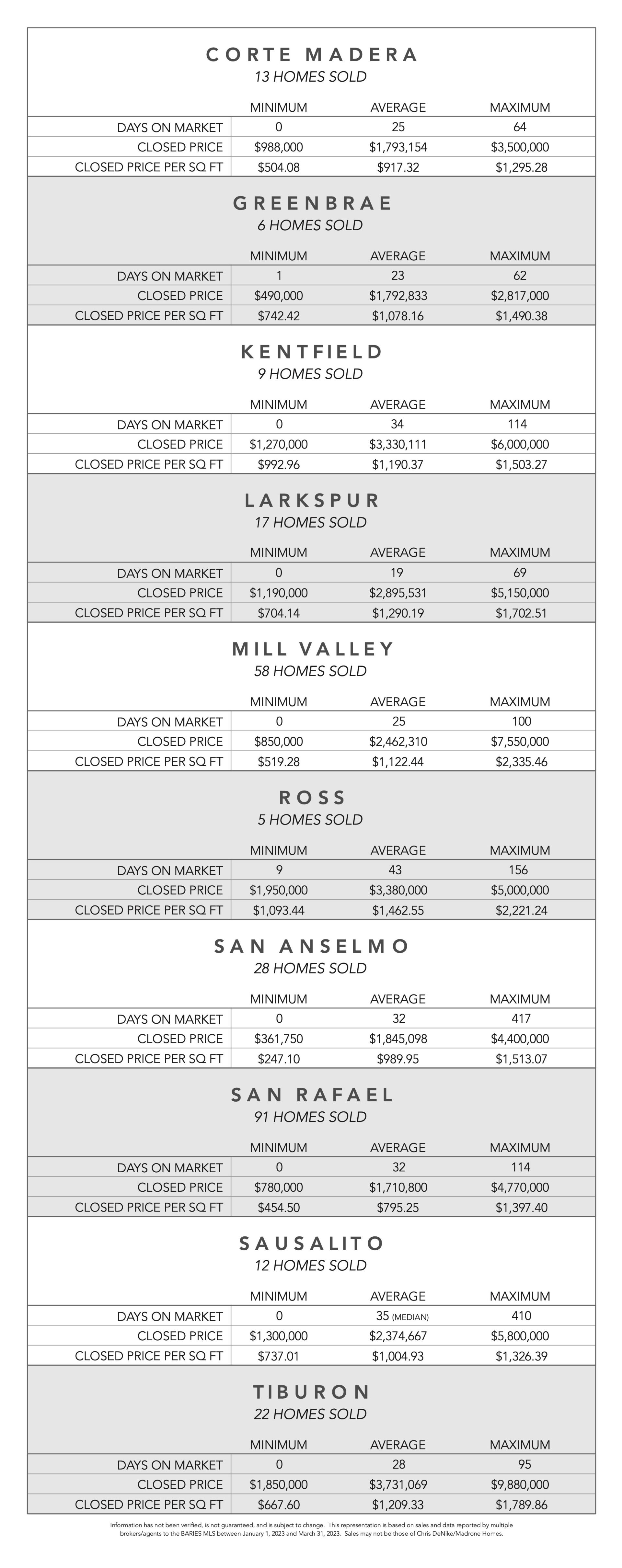THIRD QUARTER, 2023
The average 30-year-mortgage rate hit a 22-year high in August. Higher mortgage rates, which negatively affect affordability, combined with the annual summer sales slowdown and higher inventory have caused prices to decline month over month from the 2023 price peak in June. The National Association of Realtors (NAR) data show that the median home sale price in the United States declined by 1%, and Realtor.com data indicate that the median list price per square foot also decreased 1%. These aren’t major declines, as you can see, especially when considering the decline in sales. According to NAR, the number of homes sold dropped 2.2% month over month and 16.6% year over year, which is substantial but not necessarily unexpected. Home sales in 2020 and 2021 were the highest since the 2006 housing bubble burst, and normal seasonal trends were less pronounced or non-existent. It’s very easy to get wrapped up in the recent past, especially when it comes to large financial purchases, most of which are life-changing. We weren’t sure how long the break in historic seasonality would last, but it seems to have ended, and seasonality has mostly returned.
With historic seasonal trends, home prices and inventory increased in the first half of the year and declined in the back half. The pattern is essentially two steps forward and one step back over and over, so even when the second half of the year sees some price decline, year-over-year prices tend to be higher. In June 2023, the median price landed 0.9% below the all-time high reached in June 2022, revealing that prices can bounce back quickly and, maybe more impressively, can appreciate during a period of high mortgage rates.
This year, inventory may peak later than usual if sales continue to decline through what are often the strongest sales months (May-August). Inventory has steadily increased since March but is still historically low. Similar to sales, inventory is down 14.6% year over year. However, year to date, inventory has increased 15.6%, whereas sales has only increased 1.0%. Inventory growth tends to slow in the second half of the year, which is what we expect during the remainder of 2023. Far fewer new listings have come to market than a typical year, so inventory growth has been driven by fewer sales. Since sales commonly decline in the back half of the year, especially once we hit the holiday season, 2023 may have the fewest homes sold in modern history. The drop in sales and increase in inventory has caused the market to trend toward balance, although we are still in a sellers’ market. The white-hot market from 2020 to 2022 created the market we see today, which is neither hot nor cold, but rather stuck in a space of low supply and softening demand. We might simply say the market is slow.
Different regions and individual houses vary from the broad national trends, so we’ve included a Local Lowdown below to provide you with in-depth coverage for your area. In general, higher-priced regions (the West and Northeast) have been hit harder by mortgage rate hikes than less expensive markets (the South and Midwest) because of the absolute dollar cost of the rate hikes and limited ability to build new homes. As always, we will continue to monitor the housing and economic markets to best guide you in buying or selling your home.
SEE BELOW FOR AN OVERVIEW OF THIRD QUARTER SALES IN SOUTHERN MARIN


